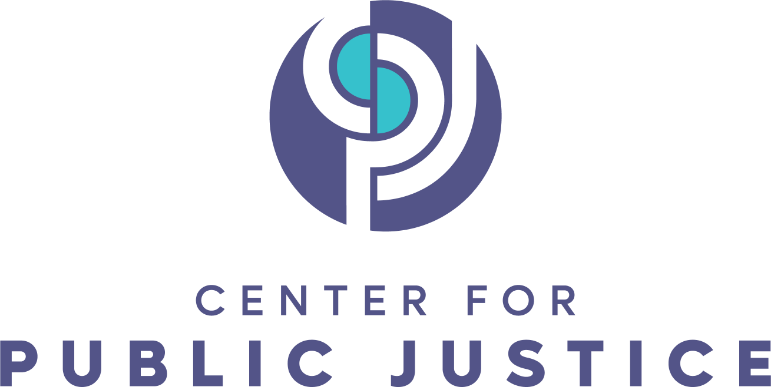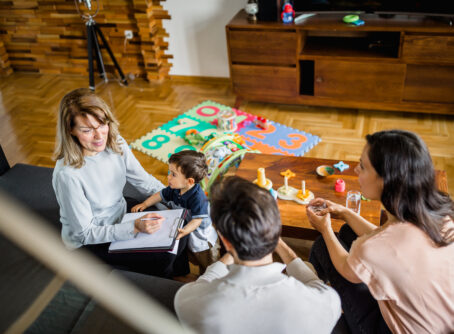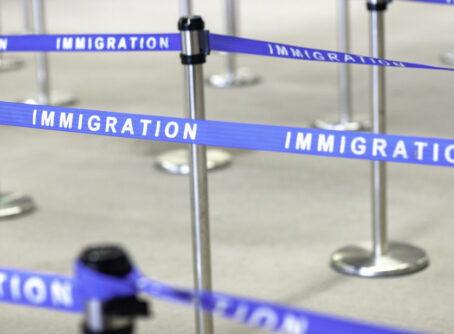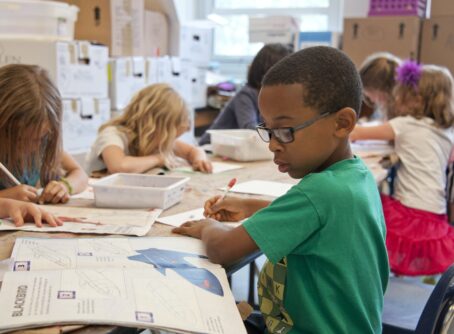
This article is part of Shared Justice’s Opportunity for Transformation series running throughout June. The series will explore one of the most urgent areas for reform within the juvenile justice system: juvenile probation. It will introduce readers to juvenile probation, its flaws, and the opportunities for government and civil society to create a juvenile justice system that is more equitable, effective, and restorative.
BY ELIZABETH MILLER
Every year, hundreds of thousands of children and teenagers are arrested in the United States. In 2019, a young person was arrested every 45 seconds, bringing them into contact with a system that is plagued by racial inequality and actually increases a young person’s likelihood to reoffend. Children and teenagers who have contact with the justice system can often get caught in a cycle of delinquency and criminal behavior.
“The system seemed like it was set up to catch me doing wrong. [South Bronx Community Connections] SBCC showed me my leadership potential and gave me opportunities to do right by my community. Because of this program, I’m in college today, not in jail.”
The experiences of this anonymous South Bronx Community Connections (SBCC) program graduate, described in the program’s technical report companion guide, reflect those of many young people caught in the juvenile justice system. The system created decades ago to meet the needs of and advocate for teenagers exhibiting delinquent behavior has morphed into a system that, in many cases, really is set up to catch kids doing wrong.
The Annie E. Casey Foundation reports that in 2018, about 750,000 adolescents in the United States entered juvenile justice systems for criminal offenses. Of those, 422,000 (57 percent) were formally processed in a juvenile court, and 220,000 were adjudicated delinquent (found guilty). 139,000 young people that year — about 63 percent of those adjudicated delinquent and 19 percent of all the youth who came into contact with the justice system — were placed on probation.
Racial disparities persist in juvenile justice systems across the country. Children of color, and especially Black children, face higher chances of being arrested, detained, incarcerated, or transferred to the adult criminal justice system than their white counterparts. Black youth are 2.4 times more likely than white youth to be arrested, and young people of color are twice as likely to be detained or incarcerated. Youth of color are also transferred to adult criminal justice systems at a higher rate. Compared to white youth, Hispanic youth are 40 percent more likely to receive an adult sentence, while American Indian youth are nearly two times more likely, and Black youth are nine times more likely.
Studies on adolescent crime patterns, the Urban Institute reports, show that delinquent behavior peaks during the teenage years, and juveniles typically desist from (or gradually stop engaging in) criminal behavior on their own by their early 20s. Adolescent brain research gives a simple explanation: the brain doesn’t finish developing until around age 25, and a lot of the development that occurs in the teenage years affects impulse control and judgment. Meanwhile, interaction with the juvenile or criminal justice system of any kind carries significant potential to harm a young person’s future and even increase future chances of reoffense.
AN ALTERNATIVE TO FORMAL PROCESSING AND ADJUDICATION
It’s clear that typical juvenile justice methods don’t effectively reduce juvenile crime or benefit juvenile offenders. The good news is that there are alternatives to formal processing that shield young people — like the SBCC program graduate — from the harms of the juvenile justice system while encouraging responsibility and growth. To accomplish these goals, youth should be directed, whenever possible, to community-based diversion programs. Families and communities can support youth who become entangled in the justice system and meet their needs in ways that courts can’t, and they can do so while lowering an adolescent’s chances of reoffending.
Diversion occurs when an offender is held accountable for their actions through informal processing and is offered a way out of formal processing or sanction. This can be done at three different levels. Police can divert pre-arrest, prosecutors can divert before bringing a case to court, and courts can divert before adjudication. Each jurisdiction’s juvenile justice system functions a little differently, so factors like whether the juvenile has to take responsibility for the crime before being diverted, when and by whom the diversion decision is made, and what kinds of requirements a young person has to meet in a diversion program vary depending on location.
WHAT SUCCESSFUL DIVERSION PROGRAMS LOOK LIKE
Understanding what diversion programs should look like involves distinguishing the roles of government and civil society institutions in the context of juvenile justice. Public justice is the guiding principle for government’s work, recognizing that government has a responsibility to promote flourishing through just policies and practices, while at the same time making space for civil society institutions, including faith-based organizations and houses of worship, to make their unique contributions to the well-being of the community.
What, then, does a successful diversion program within a public justice framework do?
It recognizes the central role of the family. Juvenile offenders are, of course, juveniles. Like all developing children and teenagers, they depend on their caregivers for support and guidance and need stable homes and family lives. Separation from their families and removal from their homes interrupt the ongoing process of family formation and can harm family bonds. The Center for Public Justice’s Guideline on Family explains that government has a responsibility to recognize and protect the family as the most basic human institution, established from the beginning by God. In the context of juvenile justice, this includes minimizing out-of-home placements for adolescents and ensuring an active role for families in the rehabilitation process. Diversion programs that recognize the role of the family include family counseling to strengthen the family unit, facilitating healing from past traumas, and equipping family members to support the young person and navigate future conflicts in a healthy manner.
It engages the community. Government alone cannot rehabilitate an individual. Local communities are uniquely equipped to provide the kind of relational support and encouragement that brings about lasting change. In the same way government makes space for families to play their unique roles, government must also step aside for community institutions to engage in relationship-building, restoration, and healing. But involving communities requires more than handing off cases to the same community-based organization (CBO) and checking a box; it requires fostering and maintaining strategic partnerships between government and a diverse array of community-based organizations (including faith-based organizations), evaluating the needs of each young person and the community needs that arise from each offense, discerning which community partner(s) can best work toward restoration for each case, and providing the support (monetary or otherwise) needed by those community partners to do their best work. Sometimes, this does mean handing off a case to a CBO and minimizing justice system contact. CBOs can support youth through mentorship programs, enrolling them in classes or activities that align with their interests (such as music or sports), providing group therapy, or helping them find and maintain employment. Other times, though, this may mean facilitating victim-offender dialogue through restorative justice programming.
It emphasizes reconciliation and restoration. As CPJ’s Guideline on Security and Defense suggests, the primary goals of the police and the courts should be reconciliation between victims and offenders, restoring a just order, and restitution for the victims of crimes. This approach is called restorative justice. In contrast to a retributive or punitive approach, which focuses on imposing the deserved sanction for a crime’s severity and consequences, restorative justice asks, “What needs to be done to repair the harm done by this crime to the victims and community?” The answer to this question is unique to each case, so involvement from both the offender and the victim, known as victim-offender mediation or encounters, is necessary to pursue restoration. This method brings together the juvenile offender, the direct victim(s) of the offense, and other members of the community that were affected by the crime — including the offender’s family members and support team. The victim shares how the crime impacted them and what they believe is needed to repair the harm done, but the offender gets a say in their “sentence” as well. Other restorative justice programs might include community conferencing, family group conferencing, and peace circles.
“Local communities are uniquely equipped to provide the kind of relational support and encouragement that brings about lasting change.
From a Christian perspective, such an approach to juvenile justice is necessary because it promotes peace, forgiveness and healing between individuals and communities after trust and relationships are broken by crime. As ambassadors of Christ, who urges us to pursue reconciliation (Mat. 5:23-24) and forgive others (Mark 11:25), we are to live at peace with one another (Rom. 12:18) and advocate for peacemaking endeavors.
Government’s responsibility to ensure domestic security means reducing crime and restoring order after a crime has taken place, not punishing perpetrators of criminal behavior, should be any juvenile justice system’s foremost goal. Diversion programs that create space for the community to pursue restoration and more effectively reduce crime than retribution should become the norm, not an exception, in the juvenile justice system.
It meets the young person’s needs. Diversion programs must treat young adults as young adults, recognizing what brain science tells us about adolescent development. Behavior modification is a process, not an event, and it is a communal effort. The community’s role in the behavior modification process is to meet each individual adolescent where they are in the process then encourage them with the appropriate kinds of support. Meeting a youth’s needs often also includes helping them face other challenges in their lives, such as mental illness or substance abuse, by connecting them to other specialized services.
First-time, low-level offenders, especially those at a low risk for reoffending, don’t necessarily need intense programming to desist from crime. Juvenile justice systems need to evaluate each young person’s risk of reoffense and be willing to dismiss low-level offenses to shield a young person from the damaging consequences of justice system involvement.
It gives the young person a voice. Teenagers, like adults, need to feel like they have a voice. If a young person is mandated a set amount of time in therapy, but the therapist pushes the adolescent toward actions they aren’t ready for, the young person will view the therapist as an adversary. If a young person is pushed into family conferencing, but doesn’t have the opportunity to talk about their needs or perspective, the young person will feel attacked. Instead, youth need to be allowed to talk openly and play an active role in drawing up the diversion plan. Like anyone else, teenagers can change their behavior, but they need allies. When each member of a young person’s support team and larger community asks the young person to weigh in and takes their contributions seriously, they’re more likely to feel supported and willing to make a change.
It sets the young person up for success. The setting of realistic, achievable goals, with grace given when there are slip-ups, is crucial. Like any person attempting behavior modification, for an adolescent to abandon delinquent behaviors, their path must be marked with successes. Positive change becomes much more achievable when the young person and support team focuses on building positive skills and pursuing goals that are important to the youth. These ideas, along with the other elements above, comprise the basic principles of Annie E. Casey Foundation’s approach to positive youth development.
DIVERSION PROGRAMS IN ACTION
Community Connections for Youth (CCFY) is a community-based organization in the Bronx with a mission “to equip grassroots faith and neighborhood organizations to develop effective community driven alternatives to incarceration for youth.” In addition to direct service programming in the South Bronx, CCFY “provides leadership to similar efforts across the country through training and technical assistance.”
One of CCFY’s programs, South Bronx Community Connections (SBCC), is “built entirely on the strengths of local grassroots faith and neighborhood organizations.” SBCC’s holistic approach means they have something for every member of the process: the youth diverted, their families, and members of the larger community.
Juveniles meet mentors from their own neighborhood, many of whom have overcome the system themselves. Rather than trying to “fix” the young person’s problem behaviors, mentors are there to listen, support, and engage them in positive programming. They focus on involving youth in community-building activities and giving them opportunities to take on leadership roles — an approach that builds trust between adolescents and adults and fosters a sense of responsibility to the community. SBCC has seen evidence that this approach keeps young people engaged: even though the typical mandate was program involvement for 60 days, the average teen voluntarily stayed in the program for 209 days, more than three times the required length.
Youth in SBCC join a neighborhood improvement project led by a participating local organization. These projects allow teenagers to collaborate with each other and with supportive adults to improve their own neighborhoods in a tangible way. During the pilot stage, SBCC’s companion guide explains, these programs included “cultivating an urban youth farm,” “painting a mural to honor a community activist,” “hosting a youth talent show,” and “organizing safe parties for teens at a local community center.” Getting involved with more than one neighborhood organization was particularly beneficial to youth. Teens who participated at three or more sites stayed in the program for an average of 318 days, nearly six times longer than those who only participated at one site. Raymond Figueroa, who runs the Urban Youth Farm at one of SBCC’s sites, explains that when youth take an active role in supporting these projects, “they stop thinking of themselves as the problem, and start seeing themselves as part of the solution.”
Families also have responsibilities and a support system set up just for them. CCFY has a separate program called Parent Peer Support Program, which matches parents of system-involved youth with “peer coaches” who have received training from CCFY and are also parents of system-involved youth. SBCC also uses a family-strengthening curriculum to restore family bonds and offers support groups and advocacy training. During the pilot stage, it became clear that the more involved the parents became in family-strengthening activities, the longer the children typically stayed.
The program has achieved remarkable outcomes for its youth. The independent evaluation following the pilot showed that only 15 percent were rearrested, and only five percent had new charges brought against them. Compared to their peers, SBCC participants were one-third less likely to be arrested again, and they were half as likely to face new charges.
LOOKING AHEAD
The kind of community-based, positive youth development diversion programming offered by CCFY recognizes justice-involved youth for who they are: children made in the image of God, and members of families and communities that need healing and support. They also reduce crime while helping young people grow and develop — far better than government can do alone.
There is a role for everyone in this process. Local leaders and community-based organizations must seek out opportunities to provide diversion programs for justice-involved youth, while government must create space for this to happen by fostering relationships with community and faith-based organizations who can do this work. Houses of worship can partner with other neighborhood organizations to support the work that is being done and provide mentorship and support to the youth and their families as they develop. Communities need to collaborate to approach justice-involved youth as part of the solution, not part of the problem, and Christians need to advocate for policies that bring justice-involved youth back into their communities instead of threatening to remove them. When each institution offers its unique contributions to the process of transforming the juvenile justice system, young people, their families, and their communities will have the opportunity to thrive.
Elizabeth Miller, a former intern with the Center for Public Justice, graduated from Abilene Christian University with a Bachelor’s of Arts in English and is currently pursuing her Master’s of Arts in English. She continues to research juvenile justice and has a passion for working with youth.






